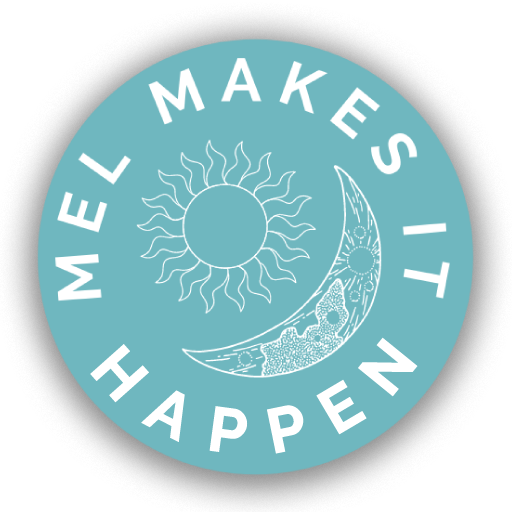I have numerous posts here on my blog about different treatments I’ve tried and different approaches I have undertaken in an attempt to heal the constant tension and pain I’ve held in my jaw and neck for the past 2+ years. Pain that has transferred and manifested in several other parts of my body, too. At times the pain subsides and, other times, I wonder how I can keep on living in my body. I’m sure if you deal with TMJ Disorder or have any form of chronic pain you can understand how I feel.
It’s taken a lot of exploration, self-care, and resilience to get me here today. I now bear a fraction of the TMJ pain I once had and my symptoms have nearly gone away. I went from not being able to open my mouth larger than the size of a golf ball to, well, having my face feel more like my face again.
There are some key things that have helped me and I want to share them in case they can be of help to you–wherever you are in your journey to heal TMJD or chronic pain!
Quick definition:
TMJ stands for Temporomandibular joint which is the joint that runs along the side of the face. It begins at the temples and runs down in front of the earlobes and into the jaw. TMJ is not an ailment itself but TMJD (or TMJ Disorder) involves a series of symptoms stemming from that area of the body.
There is a lot that I’ve learned (not only about my TMJ symptoms but) about my overall health and the very interconnectedness of all aches, stressors, symptoms, emotions, and more that I feel needs to be talked about.
Before I dive into how I’ve been able to heal, I want to drop some references to other posts you may want to check out. My process for healing my TMJ disorder and related pains involved me looking into how I could better myself on multiple levels.
Recommended reading:
Because this is the internet, I will also put the disclaimer that anything I share here is just personal experience and meant to be used for educational purposes and not as a replacement for medical care, professional advice, or otherwise.
My only suggestion would be to try out what stands out to you and know that a combination of the below therapies and tools have work best rather than just one thing alone. Also, be open-minded and be willing to commit to yourself! Healing is on the other side of resistance.

Similar posts: How to Recognize Dis-Ease & the 3 Components of Health
The Mel Makes It Happen Grand List of Tools for TMJ Disorder:
Oral Night Guard
I got a night guard early on when pain in my jaw first started developing. These are easy to obtain at drugstores but I would recommend getting one specially made for you at your dentist/orthodontist because that one will be much more comfortable!
Essential Oils
I’ve tried a variety of essential oils, including Young Living’s PanAway blend or the Saje Wellness Peppermint Halo roll-on for when my jaw had serious pain. Those are my personal favorites but if you have single oils on hand, you can apply a mix of peppermint, rosemary, clove, wintergreen, and helichrysum can be a good one, too. However, what has been incredibly helpful for me has actually been the H. Gillerman Jaw Clenching Remedy. It works subtly to calm the jaw enough to release the muscles. Once the jaw is less focused on clenching, it is more susceptible to the benefits of physical therapy exercises (see below).
CBD
While CBD doesn’t completely take away pain, it does dull pain enough for you to carry on with your day/night. While essential oils tend to provide an invigorating or calming effect (depending on what oil you use), CBD encourages relaxation which can be especially helpful before bed. Anything you can do to help relax you so you’re not clenching is helpful!
Jade Roller
The facial self-care is definitely up when you have TMJ disorder. A jade roller can feel very nice, not only because of its cooling effects (when stored in the fridge) but because it helps rub out the muscles. Jade rolling can be done morning or night as an accompaniment to your skincare routine. I like to use the roller to focus near the sides of my face on the muscles a little harder to dig into with my hands alone.
Yoga
There are some yoga stretches that may be helpful when TMJD symptoms extend past the jaw and into the neck, shoulders, and back. I like this 10 min video to help squeeze out the knots in the upper body. Definitely explore videos on YouTube because there are lots of yoga and stretching videos for any part of the body that needs some loving. Here’s another good one just in case you like options!
Therapeutic Face Massage
If you don’t have a jade roller, or if you’re just more of a hands-on person, self massage is perfect! I started researching various massages on YouTube and found this one to be really helpful.
Chiropractic Care
I started seeing a chiropractor in January 2020 and you can read all about my experience in my 6 month recap post. It took me trying out three different chiropractors to find one with a structured treatment plan aimed at helping my jaw improve. In a situation like this, I was also given physical therapy exercises I could do at home, which I feel are very necessary if you have TMJ issues. It’s worthwhile to get clear on what the professional can help with and constantly reassess treatment as your symptoms change. You want someone who is willing to work with you and not solely lead you down a path they feel is best.
MY TIP: When first looking for a chiropractor, or any professional healthcare assistance, it’s best to call or visit their website to see if they have a specific treatment plan for how to tend to TMJ disorder.
Acupuncture
I’ve also written about my acupuncture experience and this was one of my favorite treatments. The same rules from above apply (ask questions!). My acupuncturist is more consultation-based so I was able to ask questions and express concerns at the initial and every subsequent visit. I had cupping done, to help draw out the tension, and needles inserted, to target the root of my pain spots. The perk of acupuncture is how relatively quick results are. So, a couple of weeks of treatment will definitely move the needle in the healing direction (pun intended).
Facial Massage
A friend of mine introduced me to qi gong which is a gentle form of movement that helps to maximize your body’s natural energy. One day I curiously searched for qi gong for the face on YouTube and came across some qi gong facial massages! I’d consider these to be different than physical therapy or other types of facial massage. While they aren’t targeted at TMJ pain, I think they help get the energy flowing when my face feels a little stiff or swollen (especially in the mornings).
Dr. Adam Fields TMJ videos
I recommend these more than anything! The exercises outlined in Dr. Field’s first and second video really help to stretch the jaw in unique ways I hadn’t seen anywhere else. Obviously I’ve sought out many resources and that’s why I’ve put together this list! If you are like me and deal with neck issues also, his series of videos for neck exercises are also outstanding.
Lymphatic Drainage Massage
I want to do a whole post about lymphatic drainage because this whole system is so fascinating! With all of the muscle tension, swelling, and pain happening in the face, jaw, and neck, lymphatic drainage helps to aid in detoxification. This specific style of massage works with the lymphatic system to decrease inflammation and puffiness, which are (in my opinion) frustrating and uncomfortable side effects to TMJ issues. This video is specifically for the jaw, cheek, and neck.

You may also want to read: The Process of Healing
Singing
You may be wondering if you read that right or if I made a mistake with the title and the answer is no. I fully meant singing. I started to think about the jaw/neck pain that I had on a multi level way, besides physical. I resonate with the chakra system and in that methodology, dysfunction in the neck and jaw equates with not speaking your truth or underutilizing your communication sector. Singing is a rather fun way of opening up the vocal chords and loosening up the jaw. I began dedicating time to vocal warm ups and singing along to my favorite songs on a regular basis.
Enforcing boundaries
In the same spirit of tapping into the throat chakra, enforcing boundaries is a very important thing to communicate. In the past, I have tended to shy away from saying no and have looked for others to set the pace. This is not only a very passive way to live but it encourages others to walk all over you! I’ve gained more understanding of my values and have thus been practicing laying out my needs with others as clearly as possible. Take what you want from this but exercising this muscle has been so helpful for me.
Speaking my truth, unapologetically
What hurts me the most is not standing up for myself. Not being honest about what matters to me and, instead, morphing to fit what others desire. It is incredibly unsustainable, for one. Secondly, I’ve come into the mindset that each one of us deserves happiness. So dimming our light or belittling ourselves so as not to take up space (literally or figuratively) is only keeping us from blossoming into the most healed and authentic version of ourselves. Do not be afraid to share what is really in your heart!
Stress reduction
Have you heard that stress is the cause of all ails? It is linked to many chronic illnesses and that is largely because it keeps your body in a heightened state of panic, utilizing all of its valuable resources! Think: fight or flight. When your body is stressed out, it isn’t able to spend time allocating resources to engage in bodily processes or heal. Think: rest and digest. Instead of zooming places, rushing through your day, or holding your breath (something I’m guilty of), consider how you can make this very moment a little more peaceful? If you can incorporate relaxation into this moment, and then the next moment, and then the next, you’re better setting your body up to heal itself.
Self-connection
I believe our bodies hold answers to many things about us that we may not even be consciously aware of. A practice I like to do involves sitting in a quiet room alone and taking note of how I feel. Asking myself what the spots I hold pain are saying and what they are asking me to notice. Our bodies really do talk to us but we have to be open to listening. Take what you may from this but connecting to myself in this way has helped me feel more involved in my healing and not just a passenger in the process.
Having a healing mindset
I share this one last because I have struggled to maintain this myself. I feel that my own healing fluctuates a lot and that has made me doubt whether I’m getting better or not. I’ve been working to shift my perspective to not see obstacles as “not healing” but rather a step in the life-long process of healing.
Healing is on the other side of resistance.
There we are! I’ve tried many remedies and techniques to help heal my TMJ disorder symptoms naturally and I’ve covered just about all of them. My jaw has felt better in recent time but I wouldn’t say any one thing alone has taken my jaw pain away. I will say that dedication to healing and being willing to try out a combination of the aforementioned tools has helped me become happier and more able to function in a way that feels “like myself”.
I hope you may give some of these a try and let me know how it goes. Plus, feel free to share any treatments or techniques that have worked for you in the comments. I’d love to make this as large of a resource page as possible!
Lastly, if you know anyone who could use the information on this post, please send it their way!
Like this post? Pin it!


